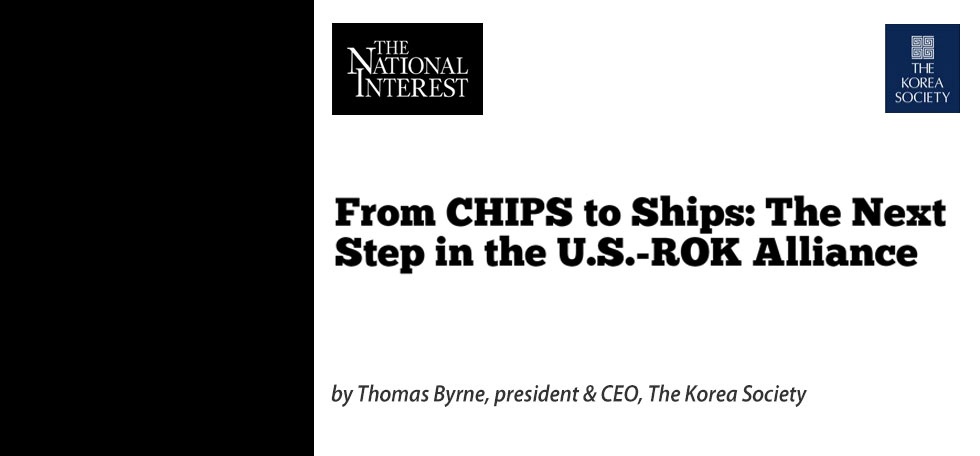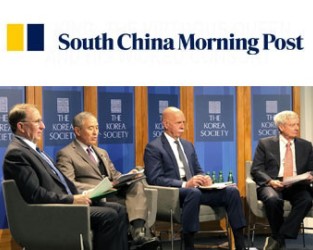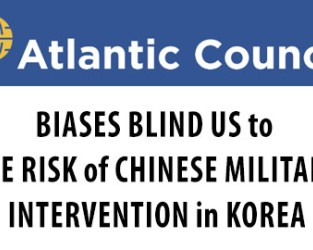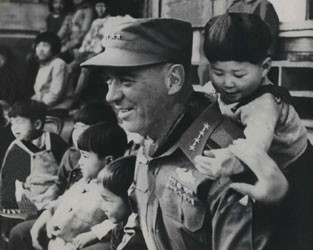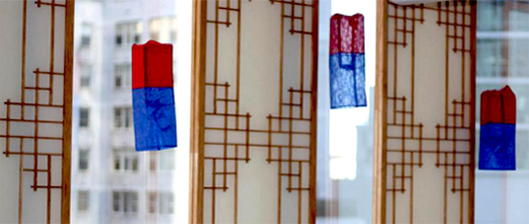![]()
September 2016
US-Korea Relations: Tests, Distress, Defection, Election
Stephen E. Noerper
The United States and South Korea entered the summer months with growing concern over North Korean missile capabilities. North Korea conducted a hobbled submarine-launched ballistic missile (SLBM) test in May, yet closed out August with a more successful launch reaching some 300nm, raising alarm for US and ROK strategists. May’s rare DPRK Workers’ Party Congress – North Korea’s first since 1980 – signaled solididarity in Kim Jong Un’s reign, replacing the National Defense Commission with a new State Affairs Commission, and appointing Ri Yong Ho as foreign minister – both developments worth watching. Mid-summer, the US sanctioned Kim Jong Un and 10 other individuals and entities for human rights violations, and the US and ROK agreed to deploy the Terminal High Altitude Area Defense (THAAD) system against North Korea. Angered, the DPRK severed the New York channel, its only official line of communication with Washington. Closure of the channel, coupled with the earlier severing of inter-Korean links, raises concerns about communication in the event of further provocations or crisis. The US and South Korea joined together in military exercise Ulchi Freedom Guardian, involving more than 25,000 US and 50,000 ROK troops. In response, Pyongyang threatened to turn Seoul and Washington into a “heap of ashes through a Koreanstyle preemptive nuclear strike.” Finally, South Korean officials and analysts privately expressed growing concern over the course of the US presidential campaign and suggestions by Republican candidate Donald Trump that allies should bear a greater cost or see US troop withdrawal, and that South Korea and Japan consider nuclear weapons development as a counter to North Korea.
DPRK Workers’ Party Congress
May saw the convening of the DPRK’s Seventh Workers’ Party Congress, signaling Kim Jong Un’s firm grip on power. In addressing the assembly, he characterized the DPRK as a responsible nuclear weapons state, a classification rejected by Washington and Seoul. In what some analysts considered a mark of potential restraint, Kim Jong Un vowed that the DPRK would opt for using nuclear weapons only when its sovereignty is violated. The North Korea leader announced a new five-year economic program, but refrained from suggesting real reforms. Foreign media covering the congress met heavy controls, and only a select few witnessed a small portion of the final proceedings. There were no meetings with the senior-most leadership, one journalist was expelled, and most of the press corps saw only local sites and projects.
A new State Affairs Commission (SAC) was named the “highest guiding organ” of the state (with Kim Jong Un as chair), replacing the National Defense Commission favored by Kim’s father. In foreign affairs, Foreign Minister Ri Su Yong was named Workers’ Party of Korea vice chairman for international relations, and Ri Yong Ho, a sophisticate and skilled negotiator on nuclear issues, was named foreign minister. Both Ri Su Yong and Ri Yong Ho serve on the new State Affairs Commission. A participant in a Washington DC review of the party congress suggested that the ties of both to the senior-most leadership could imply that DPRK agreements going forward might bear new weight. Ri Yong Ho emerged at the ASEAN Regional Forum Foreign Ministers Meeting in Laos to intense media attention and received a boost from Chinese Foreign Minister Wang Yi, signaling a possible warming of Sino-DPRK ties (Ri Su Yong also visited Beijing).
DPRK missile tests and THAAD
However, internal DPRK recalibrations failed to signal positive developments for South Korea or the United States. North Korea spent the summer months testing its missile technology, both short- and intermediate-range, and stoking concerns over enhancement of its submarine-launched ballistic missile (SLBM) capabilities. Earlier tests had seen mishap and spin, but the DPRK marked real improvement over the short period reviewed. Whereas an early May SLBM traveled less than a couple hundred meters, on Aug. 24, a KN-11 missile traveled a remarkable 500km into Japan’s Air Defense Identification Zone (ADIZ) waters. That followed an Aug. 3 Rodong test, with a missile landing only 155nm off Japan’s coast in its exclusive economic zone (EEZ) – the closest a missile has come to Japan since 1998, raising alarm and strong condemnation from Prime Minister Abe Shinzo.
In sum, the DPRK has launched more than 20 missiles to date in 2016, a serious acceleration that raises tensions in the region. The provocations have led to greater US-ROK cooperation, especially through an agreement to deploy the Terminal High Altitude Area Defense (THAAD) system to South Korea and closer trilateral consultation with Japan. After earlier to and fro, the ROK moved with newfound determination to work with the US on the THAAD deployment, announcing on July 8 its intention to deploy the system. Seoul followed the general announcement by naming Seoungju on July 13 as the site for deployment, which met condemnation and protest by some local residents concerned about rumored health threats posed by the THAAD radar system and the environmental impact. In ensuing weeks, opposition lawmakers also raised concerns about the decision to deploy the system.
China, Russia, and North Korea voiced opposition to the THAAD deployment as well. The US sought to offer assurances to China, with the head of the US Army determined to convey to his PLA counterpart in Beijing the defensive aspects of the new system. China rebutted assurances from Washington and Seoul and warned that the perceived imbalance caused by THAAD would raise regional tensions. In early August, President Park Geun-hye rebuked critics at home and abroad and underscored South Korean determination to see through the THAAD deployment. In early September, she offered assurances in an interview with Russian news service Sputnik News that THAAD was not aimed at Russia, or any other third party
Despite firm commitment on the part of ROK and US defense authorities, opposition to THAAD remains a political reality. The controversy will spill into the 2017 ROK presidential elections and poses immediate challenges for ROK diplomacy, particularly with China. For the United States, installation of the system in Korea is a stated strategic priority, but brings other challenges. Chinese consternation has increased, especially when coupled with tensions over the South and East China Seas.
Naming Kim Jong Un
In early July, the US State and Treasury Departments made an unprecedented announcement in naming North Korean leader Kim Jong Un and 10 other DPRK State Security Department individuals and affiliates “ultimately responsible” for the DPRK’s “notorious” human rights abuses. The immediate impact was to freeze assets and deny business with the named designees, consistent with steps taken earlier this year by Congress and the president to tighten sanctions on North Korea. The announcement met stark pushback from Pyongyang; it condemned the move as an act of war, launched a missile (which exploded on firing), and closed its only official means of communicating with Washington, DC – the New York channel, which involves personnel at the DPRK Mission to the United Nations. In its July 11 response, North Korea cautioned that relations with the US will be under the “wartime law” of the DPRK, noting its applicability to detained US citizens, two of whom remain imprisoned in North Korea.
The DPRK reaction to the naming of its leader was similar to that exhibited following the 2014 release of the United Nations Commission of Inquiry (COI) Report, which urged referral of DPRK senior leaders to the International Criminal Court (ICC), and before that the 2005 cut-off of North Korean funds through Banco Delta Asia (BDA). US and South Korean officials and human rights organizations hailed the US move, which stemmed from the North Korea Sanctions and Policy Enhancement Act of 2016.
The DPRK now engages with the US only at the unofficial level. However, the communications cutoff comes at a time when North Korea is advancing its nuclear and missile technology. In mid-August, the DPRK informed Kyodo News that it is harvesting plutonium from spent fuel rods, while continuing production of highly enriched uranium “on schedule.”
Ulchi Freedom Guardian
The second scheduled major exercise of the year between ROK and US forces, Ulchi Freedom Guardian, began the third week of August. Primarily a computer simulation aimed at the defense of the South in the event of an invasion from the North, the exercise engaged more than 75,000 troops, two-thirds from the ROK and one-third from the US. The US advised the DPRK through Panmunjom of the defensive nature of the exercises, but the DPRK condemned the exercises as offensive and threatened to reduce Seoul and Washington to ash heaps.
More seriously, the DPRK fired its latest SLBM on Aug. 24, a successful launch it hailed as its “greatest success and victory.” Some US and ROK strategists were quick to caution against the significance without a greater DPRK submarine capability, but at least one group in Seoul suggested in late August that the North Koreans are intent and fast-tracking development of a US-Korea Relations 42 September 2016 larger class of submarines. Ju-min Park and James Pearson of Reuters acknowledge the consensus that the DPRK “remains years away from developing a missile system or submarine which could threaten its sworn enemy, the United States,” but that does not account for security assurances afforded South Korea and Japan that could draw in the US to regional conflict. Jeffrey Lewis of the Middlebury Institute notes the tremendous challenge of finding even a small number of subs armed with missiles and the “enormous investment in North Korea’s missile production infrastructure consistent with the propaganda offensive and spike in missile testing.”
Defection
Seoul announced in mid-August the high-profile defection of Thae Yong Ho, the second-highest diplomat at the DPRK Mission to the UK. The defection followed that of 13 North Korean restaurant workers to South Korea in early April. Less reported though have been the recent defection of other officials, including at least one senior military and one DPRK fund manager, as well as a number of diplomats, including the number three in Moscow and a diplomat posted in Bulgaria. Thae’s defection is notable, as he could provide useful information about the DPRK Mission to the UK, which handles it European affairs, as well as his primary tasks of (ironically) tracking defectors from North Korea and responding to human rights criticisms. There were reports that he had been called home after significant time in European assignments. Pyongyang quickly condemned Thae as a traitor and in typical fashion accused him of embezzlement and other improprieties.
In the aftermath, President Park Geun-hye suggested rifts among senior elites are a sign of fragmentation in Pyongyang. US and ROK analysts are divided in seeing the defection along these lines or as a more isolated incident facilitated by Thae’s having his immediate family with him. South Korean media reported on fears that the DPRK could attempt to assassinate defectors, as well as a possible acceleration of a “reign of terror” on the part of Pyongyang in response.
Election
One certainty in US-Korea relations was the growing concern expressed by observers in Seoul over the US presidential campaign and the candidates’ positions toward Korea and Asia. Officials privately sought advice from colleagues, scholars, and analysts as to the seriousness of Republican candidate Donald Trump’s calls for allies to pay more for US security guarantees or face the US going home. Trump’s statements have created a degree of consternation among South Korean officials and policy observers not seen since Jimmy Carter’s call for a US troop withdrawal from the Korean Peninsula in the late 1970s. Trump also had suggested South Korea and Japan develop nuclear weapons to counter those of North Korea, raising concerns in the nonproliferation community and leading to repeated private assurances to Americans that those were options that neither the Korean nor Japanese polities would accept.
South Koreans see more dependability in Democratic candidate Hillary Clinton’s stands on Korea and Asia as she is generally viewed as one of the architects of the Obama rebalance toward Asia. Clinton advisor Wendy Sherman’s May 3 address to CSIS was seen though by many Koreans as a harder line by stepping up sanctions on the DPRK until it accepts an Iranstyle negotiation. US-Korea Relations 43 September 2016 In sum, Koreans were as confused as their US counterparts over the 2016 US presidential campaigns and the implications of a Trump victory. All ears will be on discussions of foreign policy in the three US presidential candidate debates. The 2017 South Korean presidential campaign will see a step up in its foreign policy and security focus, depending on the result of the US elections, as well as North Korean provocations. A possible DPRK fifth or sixth nuclear test or further missile tests – as well as potential mishap or political intrigue – could present the outgoing or incoming United States and South Korean administrations with serious challenges.
Chronology of US-Korea Relations
May – August 2016
May 2016: US Congressional Research Service releases a comprehensive report on US-South Korea Relations.
May 6-9, 2016:DPRK holds its Seventh Workers’ Party Congress, the first since 1980, further solidifying Kim Jong Un’s leadership.
May 7, 2016: North Korea test-fires a submarine-launched ballistic missile. Though traveling only 150 meters, the missile signals advances in DPRK technology.
May 9-10, 2016:: Ninth round of the South Korea-US Integrated Defense Dialogue (KIDD) is held in Washington, led by South Korea’s Deputy Defense Minister for Policy Yoo Jeh-seung and US Assistant Secretary of Defense for Policy David Shear
May 25, 2016: Sen. Cory Gardner (R-CO) introduces an amendment to the FY 2017 National Defense Authorization Act, calling for Terminal High Altitude Area Defense (THAAD) system deployment to the ROK.
May 31, 2016: DPRK fails in its fourth test in 2016 of the Hwasong-10 intermediate-range ballistic missile.
June 1, 2016: US Ambassador to the Republic of Korea Mark Lippert addresses the Institute for Global Economics on Allies in Business: The Future of the US-ROK Economic Relationship.
June 1, 2016: US Treasury Department classifies North Korea as a primary money laundering concern under Section 311 of the Patriot Act.
June 4-6, 2016: US Defense Secretary Ash Carter delivers a keynote at the Shangri-La Dialogue (15th Asia Security Summit) in Singapore, attended by ROK Defense Minister Han Min-koo. The two meet Japan Defense Minister Nakatani Gen on the sidelines.
June 10, 2016: US-Korea Institute at SAIS issues a report, No Man’s Land: The Future of US Policy toward North Korea.
June 13, 2016: USS Mississippi, a fast-attack submarine, visits the ROK Fleet base in Busan to signal strength in the alliance and expand naval cooperation.
June 16, 2016: US House Foreign Affairs Committee approves HR 5484, the State Sponsors of Terrorism Review Enhancement Act, which increases the period a designated country must refrain from sponsoring terrorism from six to 24 months. HR 5208, the North Korea State Sponsor of Terrorism Designation Act of 2016, mandates that the State Department report to Capitol Hill on the DPRK’s designation.
June 21-23, 2016: Northeast Asia Cooperation Dialogue (NEACD) meets in Beijing.
June 22, 2016: DPRK fails in its fifth Musudan intermediate range ballistic missile test of 2016, but succeeds the same day in a sixth test of the Hwasong-10, which flies 400km.
June 22, 2016::President Barack Obama extends Executive Order 13466, Continuing Certain Restrictions with Respect to North Korea and North Korean Nationals, which was initiated under President George W. Bush.
June 28, 2016: US, South Korea, and Japan conduct missile warning exercise off the coast of Hawaii.
July 8, 2016: South Korea and the US announce the decision to deploy the Terminal High Area Altitude Defense (THAAD) system to South Korea to protect against the DPRK missile threat.
July 8, 2016: UN Office of the High Commissioner for Human Rights names Tomas Ojea Quintana as special rapporteur on human rights in the DPRK beginning Aug. 1.
July 9, 2016: DPRK fails in its test of the Bukguekseong-1, a KN-11 submarine-launched ballistic missile (SLBM), which explodes at an altitude of only 10km.
July 11, 2016: North Korea closes the New York communication channel, its only direct diplomatic link to Washington.
July 13, 2016: ROK Deputy Defense Minister Yoo Jeh-seung announces THAAD deployment to Seoungju. The announcement meets considerable local opposition.
July 13, 2016: ROK First Vice Foreign Minister Lim Sung-nam and Japan Vice Foreign Minister Sugiyama Shinsuke meet in Hawaii to discuss enhanced cooperation in response to DPRK provocations.
July 14-15, 2016: Vice President Joseph Biden and Deputy Secretary of State Antony Blinken meet ROK VFM Lim and Japan VFM Sugiyama for trilateral discussions. ROK Special US-Korea Relations 45 September 2016 Representative for Korea Peninsula Peace and Security Affairs Kim Hong-kyun meets US Special Representative for North Korea Policy Sung Kim.
July 19, 2016: DPRK launches three missiles from Hwanghae Province, including the shortrange Scud and mid-range Rodong, which travel 310-370 miles.
July 25, 2016: President Obama issues a presidential proclamation commemorating the National Korean War Veterans Armistice Day.
July 27, 2016: ASEAN Foreign Ministers Meeting adopts a joint communiqué underscoring ASEAN support for denuclearization of the Korean Peninsula.
Aug. 2, 2016: President Park Geun-hye underscored ROK resolve to deploy THAAD despite domestic and Chinese opposition.
Aug. 3, 2016: DPRK fires a mid-range Rodong missile from the DPRK’s southwest.
Aug. 17, 2016: Seoul announces the defection of the DPRK’s number two diplomat in the UK, Thae Yong Ho, the eighth or ninth diplomatic defections in 2016.
Aug. 17, 2016: Japan’s Kyodo News reports that North Korea’s Atomic Energy Institute says the DPRK has resumed plutonium production by reprocessing spent fuel rods and is producing highly enriched uranium on schedule.
Aug. 20, 2016: DPRK condemns defector Thae Yong Ho as “human scum who betrayed the fatherland.”
Aug. 22, 2016: President Park Geun-hye suggests that DPRK elite defections signal “serious cracks” in the DPRK regime.
Aug. 22-Sept. 2, 2016: ROK and US Combined Forces Command (CFC) conduct annual Ulchi Freedom Guardian military exercise.
Aug. 24, 2016: ROK Foreign Minister Yun Byung-se, Japanese FM Kishida Fumio and China FM Wang Yi meet in Tokyo.
Aug. 24, 2016: DPRK launches a KN-11 SLBM from waters off Sinpo. It travels 500km, falling within Japan’s Air Defense Identification Zone (ADIZ).
Aug. 25, 2016: Pyongyang reportedly orders the return of DPRK Ambassador to the UK Hyon Hak Bong following the defection of Thae Yong Ho.
Aug. 31, 2016: South Korea’s JoongAng Ilbo reports executions of DPRK Vice Premier and Education Minister Kim Yong Jin and former Agriculture Ministry official Hwang Min.
Aug. 31, 2016: US State Department spokesperson John Kirby urges the DPRK to pardon and release US university student Otto Frederick Warmbier “on humanitarian grounds.”
Aug. 31, 2016: Seoul-based research organization suggests that North Korea is building a 3,000- ton-class submarine designed to hold four SLBMs, with a goal of completion by October 2017. DPRK Sinpo-class subs carry a single SLBM with a displacement of 2000 tons.
Aug. 31, 2016: South Korea and the US-led UNC launch a second joint policing operation of 2016 at the Han River estuary to curb and repel illegal boat activity violating the Korean Armistice Agreement.

